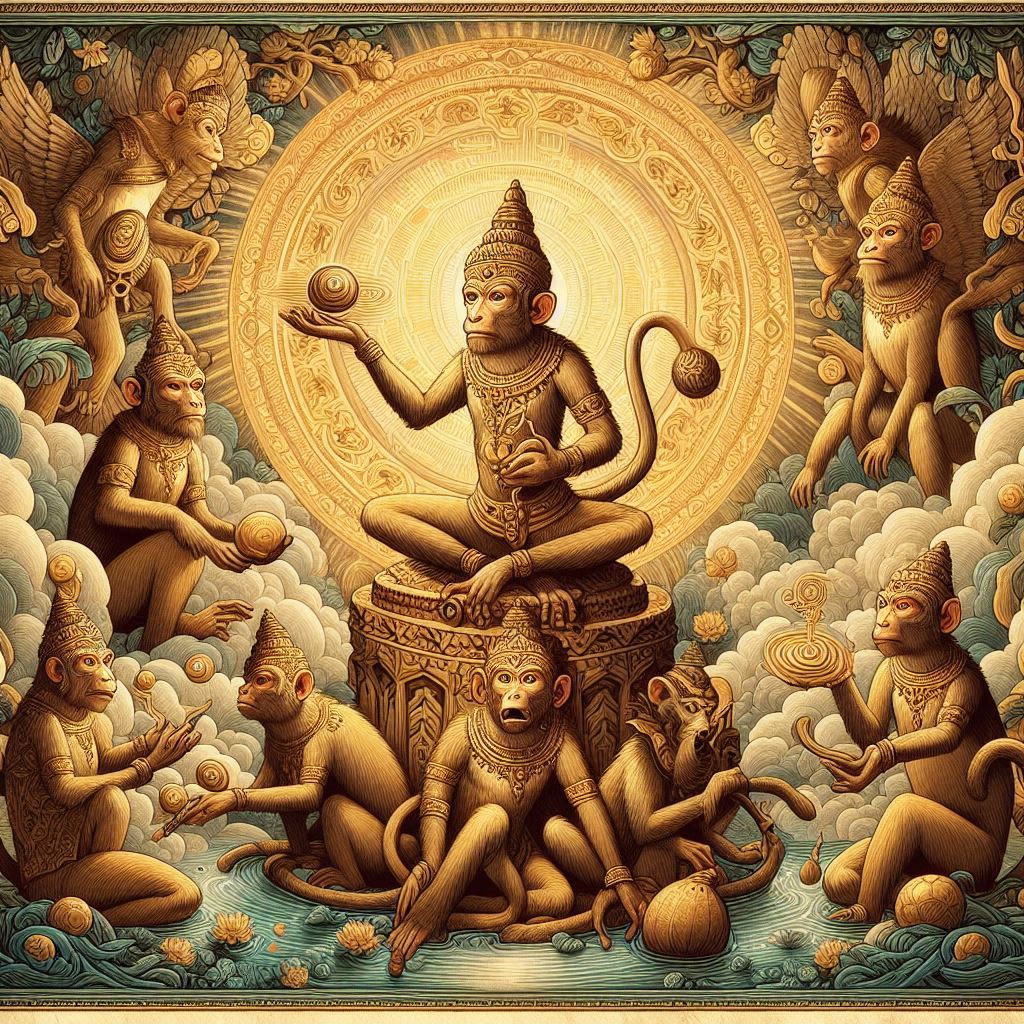
The Role of Monkeys in Ancient Art and Symbolism
Share
The Role of Monkeys in Ancient Art and Symbolism
Monkeys have held a fascinating place in ancient art and symbolism, often representing a wide range of human emotions, traits, and spiritual concepts. These remarkable creatures, with their playful and curious nature, have been depicted in various cultures throughout history, from the jungles of Southeast Asia to the deserts of Egypt. In this blog post, we will explore how monkeys have been portrayed in ancient art and the deeper meanings behind their symbolic significance.
1. Monkeys in Ancient Chinese Art and Symbolism
In Chinese culture, monkeys have long been associated with intelligence, agility, and mischievousness. One of the most well-known representations of monkeys in Chinese art is the legendary figure of the Monkey King, also known as Sun Wukong, from the classic Chinese novel Journey to the West. The Monkey King is depicted as a powerful and clever character, capable of transforming into various forms and possessing extraordinary strength and agility.
The image of Sun Wukong has been a major influence on Chinese art for centuries, with the Monkey King often featured in paintings, sculptures, and even folk art. The symbolism of the monkey in ancient China also extends to its connection with the Zodiac, where the Year of the Monkey is believed to bring good fortune to those born under its sign. Monkeys in Chinese art are frequently depicted with playful, humorous expressions, emphasizing their wit and cleverness.
2. Monkeys in Ancient Indian Art and Mythology
Monkeys have a prominent role in Indian mythology and art, often symbolizing devotion, strength, and loyalty. One of the most significant monkey figures in Indian culture is Hanuman, the monkey god who appears in the ancient Indian epic, the Ramayana. Hanuman is revered as a symbol of unwavering loyalty and devotion to Lord Rama, as well as an embodiment of strength and courage.
In Indian art, Hanuman is often depicted as a muscular, heroic figure with a monkey face, demonstrating his divine nature. Statues and paintings of Hanuman can be found in temples and homes across India, where he is worshipped for his protective qualities and his ability to overcome obstacles. The monkey motif in Indian art frequently symbolizes the connection between the divine and the earthly, as Hanuman bridges the gap between gods and humans.
3. Monkeys in Egyptian Art and Symbolism
In ancient Egypt, monkeys were often associated with music, fertility, and the afterlife. The Egyptians depicted monkeys in various forms, with the most common being the Baboon, which was believed to be sacred to the gods. The baboon was seen as a symbol of wisdom and was often associated with the god Thoth, the deity of writing, knowledge, and the moon.
Baboons were often featured in Egyptian art, particularly in tomb paintings, where they were depicted seated, playing musical instruments like flutes and harps. The presence of baboons in tomb art symbolized the idea of eternal life and the continuation of joy and music in the afterlife. The playful and lively nature of monkeys in Egyptian art also reflected their role as messengers between the gods and humans, carrying messages of wisdom and divine favor.
4. Monkeys in Ancient Greek and Roman Art
In ancient Greek and Roman cultures, monkeys were often associated with chaos, foolishness, and the more primal aspects of human nature. The Greeks, in particular, saw monkeys as representations of lack of self-control, and they often used them in artwork to represent the darker sides of human behavior.
Monkeys were also depicted in Roman art, particularly in frescoes and mosaics, where they were sometimes shown as comical figures engaging in playful or chaotic behavior. Despite their association with disorder, monkeys were also seen as symbols of impulsiveness and wild nature, qualities that were both admired and feared in the ancient world.
5. Monkeys in Pre-Columbian Art
In Pre-Columbian art, particularly in the ancient cultures of Mesoamerica, monkeys were often depicted in stone carvings and pottery, symbolizing intelligence, playfulness, and the trickster archetype. The Maya civilization, for example, included monkeys in their artwork as part of their creation myths. Monkeys were seen as creatures that bridged the world of humans and the gods, often associated with the underworld or the spiritual realm.
In the ancient Aztec culture, monkeys were portrayed as playful yet clever beings, often linked to the god Tezcatlipoca, the deity of night and conflict. Monkeys in Aztec art were seen as both mischievous and wise, symbolizing the dual nature of life itself—its capacity for both good and evil.
6. Monkeys in African Art and Symbolism
Across Africa, monkeys have held a special place in the symbolic language of various cultures. For example, in West African mythology, monkeys often represent wisdom, adaptability, and intelligence. The Akan people of Ghana, for instance, believe that monkeys are tricksters who can outsmart humans, highlighting the monkeys’ cleverness and ability to navigate complex situations.
Monkeys in African art are often depicted in wooden sculptures, textiles, and masks, where they represent different aspects of human behavior, from wisdom and cunning to playfulness and unpredictability. These representations reflect the importance of monkeys in African folklore, where they are seen as both teachers and tricksters, reflecting the complexities of life and human nature.
Conclusion: The Enduring Legacy of Monkeys in Ancient Art and Symbolism
Monkeys have played an essential role in the art and symbolism of ancient cultures around the world. Whether as divine figures, symbols of intelligence and loyalty, or representations of mischief and disorder, monkeys have fascinated and inspired generations. Their presence in ancient artwork serves as a reminder of our shared connection with the animal kingdom and the timeless themes of human nature, spirituality, and the complexity of life.
By exploring how monkeys were depicted in ancient art, we gain valuable insight into the cultural significance of these fascinating creatures and their enduring role in shaping human imagination and creativity.
Want to learn more about animal behaviors and fun facts? Check out:
